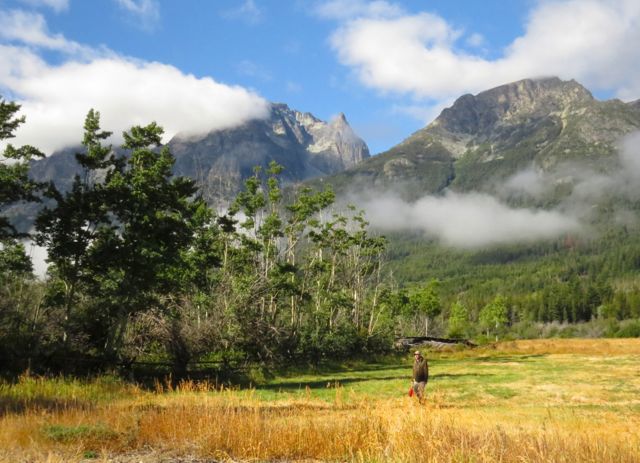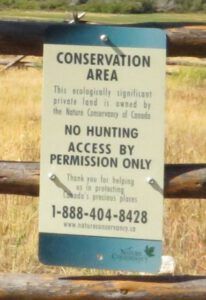 For some years, the Nature Conservancy of Canada has been buying up properties at the north end of Tatlayoko Lake, and they have established the Tatlayoko Lake Bird Observatory there.
For some years, the Nature Conservancy of Canada has been buying up properties at the north end of Tatlayoko Lake, and they have established the Tatlayoko Lake Bird Observatory there.
It is the best part of 2 hours’ drive from where I live: I have long wanted to go down and see what was going on at the bird observatory. I happened to pick the day the weather changed from storm to sun, and it could not have been more spectacular.
I was advised to get there early: the sun rose when I reached Tatla Lake
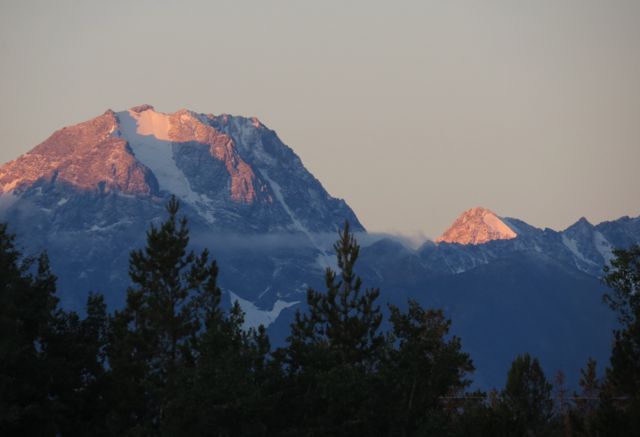 There, a road branches from Highway 20 and follows the Homathko River south. Potato Range is on the left, and the spectacular Niuts rear up on the right.
There, a road branches from Highway 20 and follows the Homathko River south. Potato Range is on the left, and the spectacular Niuts rear up on the right.
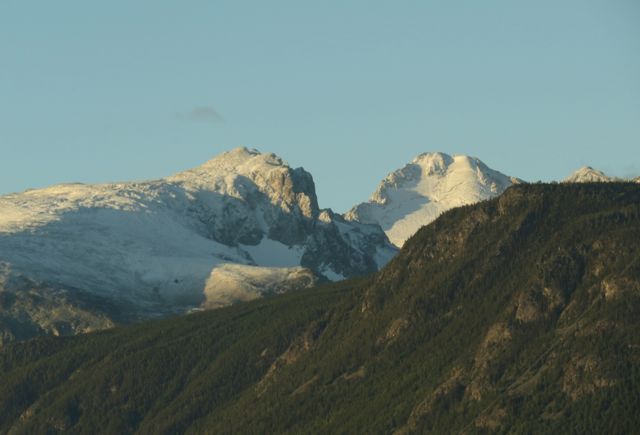 The road drops considerably in elevation, and soon the valley bottom could be seen. Somewhere below all that fog are the upper reaches of Tatlayoko Lake and the bird observatory.
The road drops considerably in elevation, and soon the valley bottom could be seen. Somewhere below all that fog are the upper reaches of Tatlayoko Lake and the bird observatory.
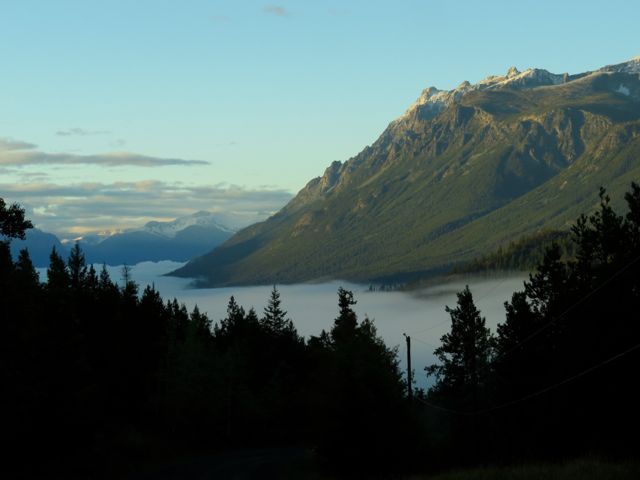 I love it when the mountains are lapped by a sea of fog; but I knew I would end up in it. Soon, it was so thick I could hardly see where I was going. The lower reaches of the valley are full of mule deer.
I love it when the mountains are lapped by a sea of fog; but I knew I would end up in it. Soon, it was so thick I could hardly see where I was going. The lower reaches of the valley are full of mule deer.
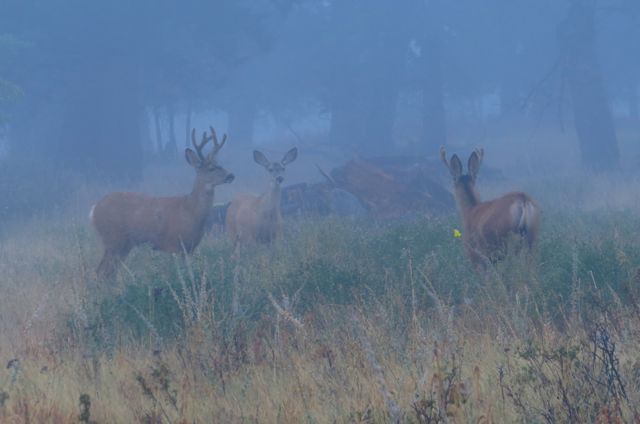 The fog spangled every spider’s web.
The fog spangled every spider’s web.
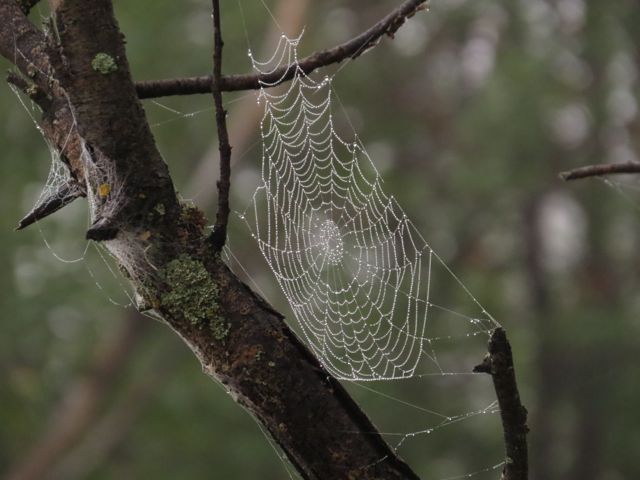 Orb spiders given LSD cannot make cartwheel-shaped webs any more, but I suspect the picture below was from a web of a different species of spider.
Orb spiders given LSD cannot make cartwheel-shaped webs any more, but I suspect the picture below was from a web of a different species of spider.
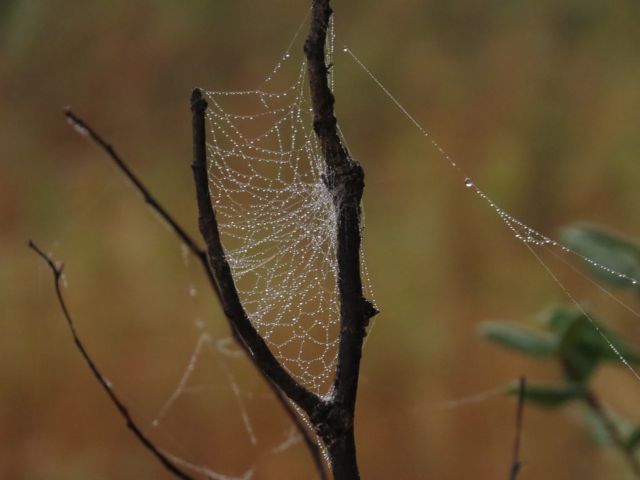 The 15 bird-catching nets are set up for 6 hours a day, starting around 7.30 am. The four bird-banders walk around every half hour – as the walk is a km long, this keeps them busy.
The 15 bird-catching nets are set up for 6 hours a day, starting around 7.30 am. The four bird-banders walk around every half hour – as the walk is a km long, this keeps them busy.
The first net on my first walk yielded a song sparrow.
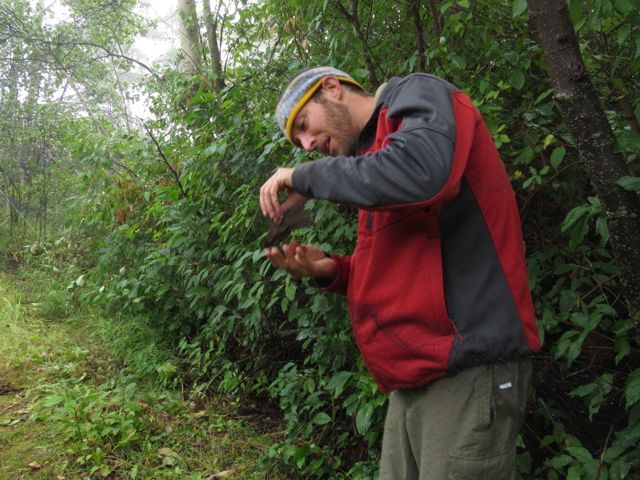
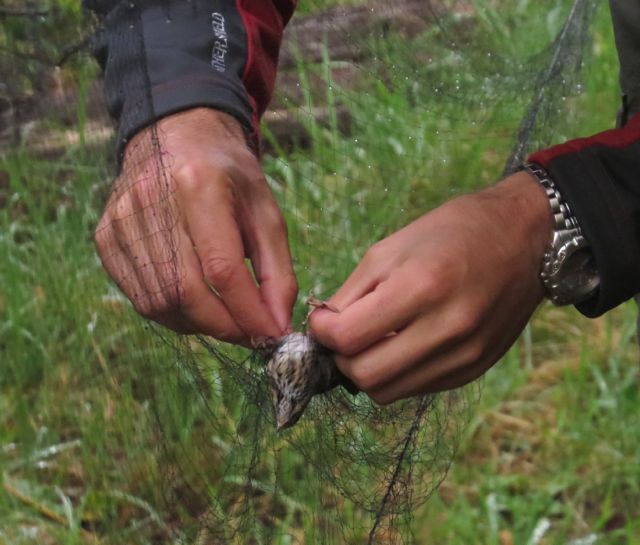 On the same round, Gail retrieved a female yellow warbler.
On the same round, Gail retrieved a female yellow warbler.
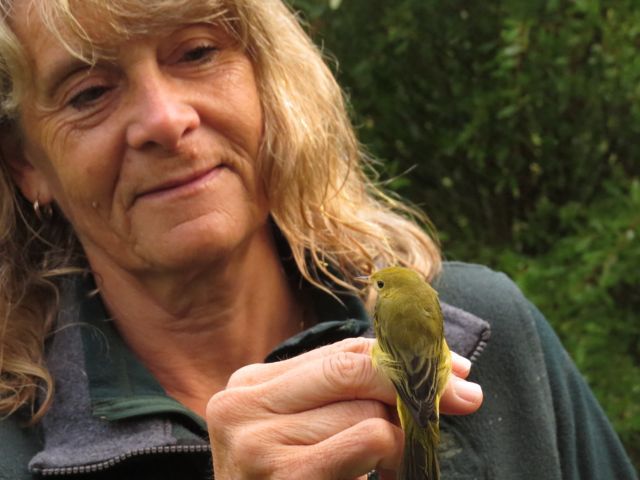
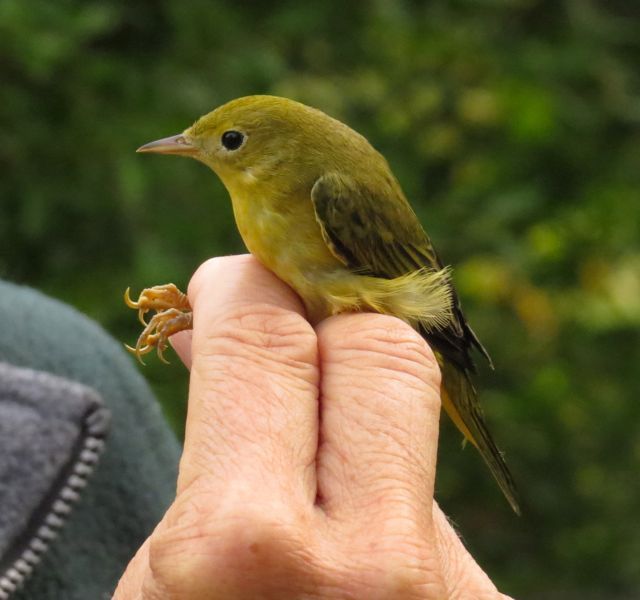 The birds are taken back to the observatory post (a small shed with a solar-driven computer and a few tools) and first a little ring is clamped to its leg. This male yellow warbler is getting its wing measured. Both wing and tail feathers are checked for the stage of the moult – this helps determine whether it is a this-year’s hatchling or older.
The birds are taken back to the observatory post (a small shed with a solar-driven computer and a few tools) and first a little ring is clamped to its leg. This male yellow warbler is getting its wing measured. Both wing and tail feathers are checked for the stage of the moult – this helps determine whether it is a this-year’s hatchling or older.
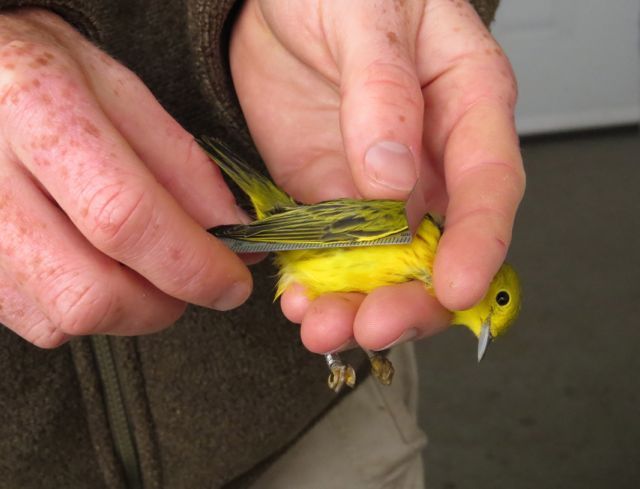 Then its feathers are blown apart (by someone gently puffing on the bird) so that naked skin can be seen. A healthy fat bird has an orange skin. Three or four key spots are quickly examined. (Fat of course is good right now – the birds need the energy to migrate.)
Then its feathers are blown apart (by someone gently puffing on the bird) so that naked skin can be seen. A healthy fat bird has an orange skin. Three or four key spots are quickly examined. (Fat of course is good right now – the birds need the energy to migrate.)
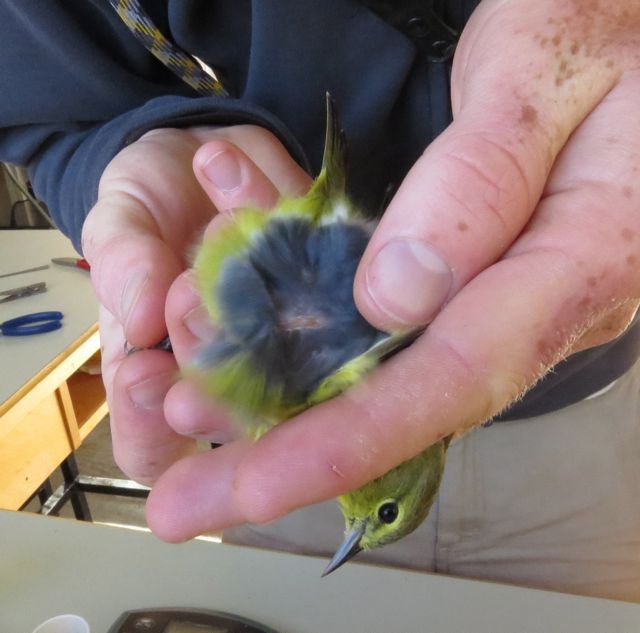
The final indignity is to be popped into a tube head down and weighed.
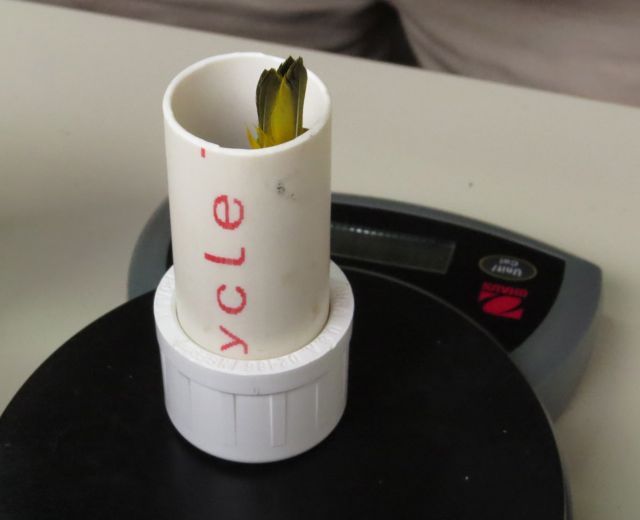 I am sure that when the little guys are released, they have a good preening.
I am sure that when the little guys are released, they have a good preening.
Some birds were recaptured from either earlier this year or even two or three years ago. A few had been caught only half an hour before! The banding session lasts 2 month; there is also a 1-week session as the birds first arrive in the spring. 12,000 birds have been banded at the Tatlayoko Lake Bird Observatory, but almost none have been recovered elsewhere.
As well as checking the nets, a walk through a larger area is taken twice a day for a visual census. Many species don’t get caught in the nets. Here is a least flycatcher puffing out his feathers against the cool dampness. It rained quite heavily down here the day before.
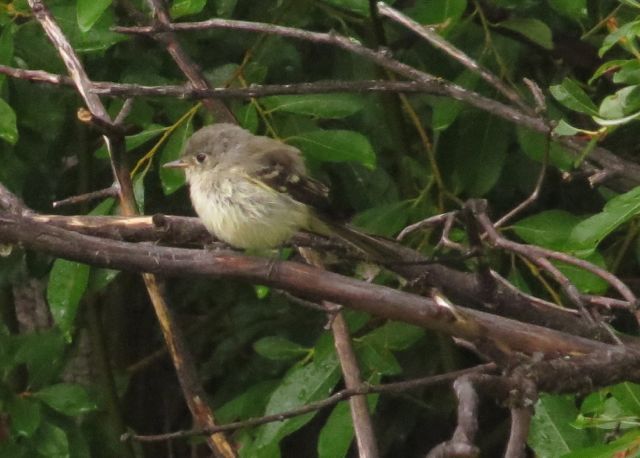
About three hours into the morning, the fog began to break up.
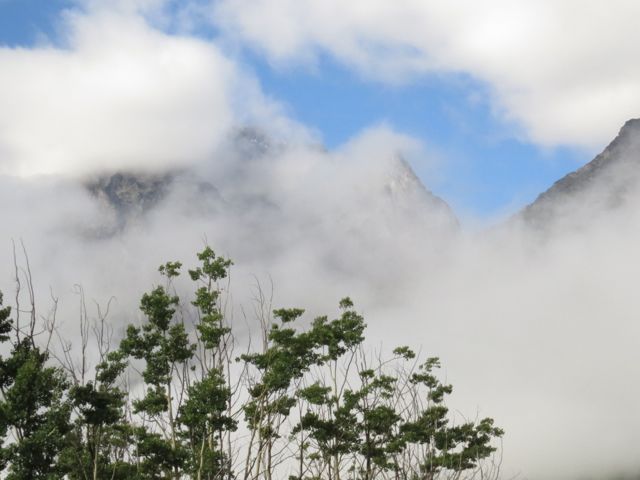 The Niuts were revealed again.
The Niuts were revealed again.
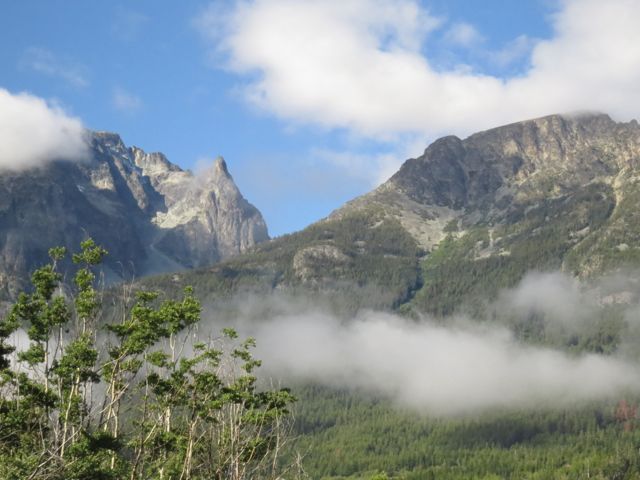 Avery is returning with a bird bag from yet another round to the nets. All in a days’ work.
Avery is returning with a bird bag from yet another round to the nets. All in a days’ work.
